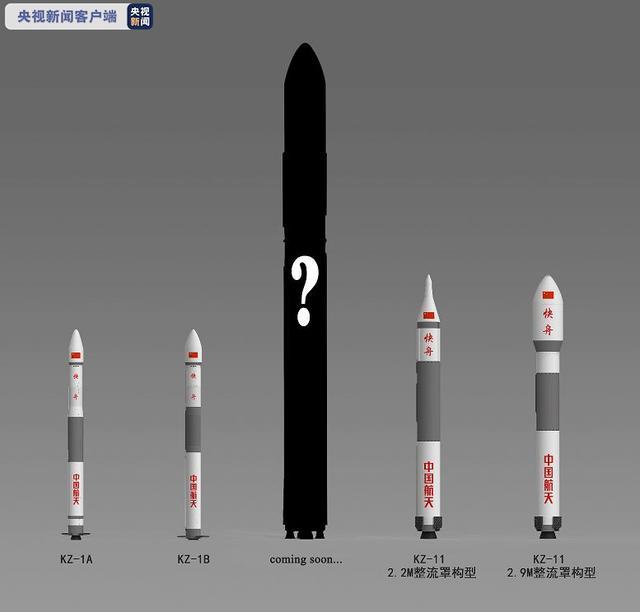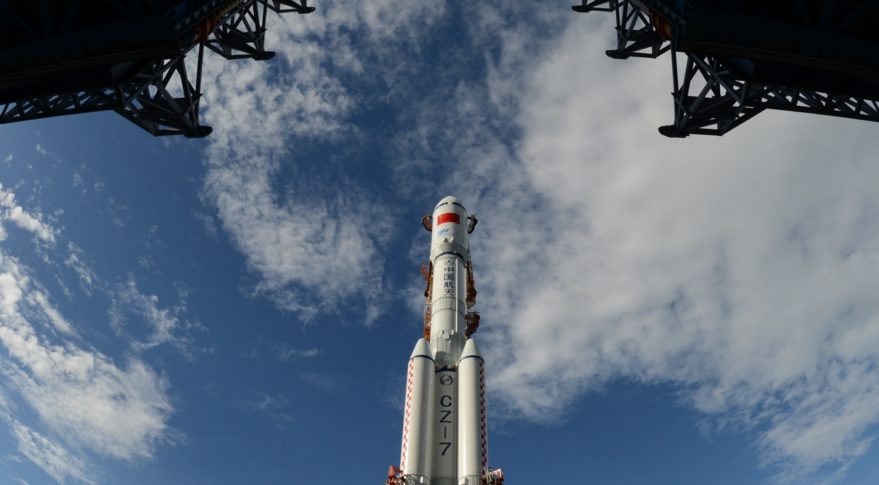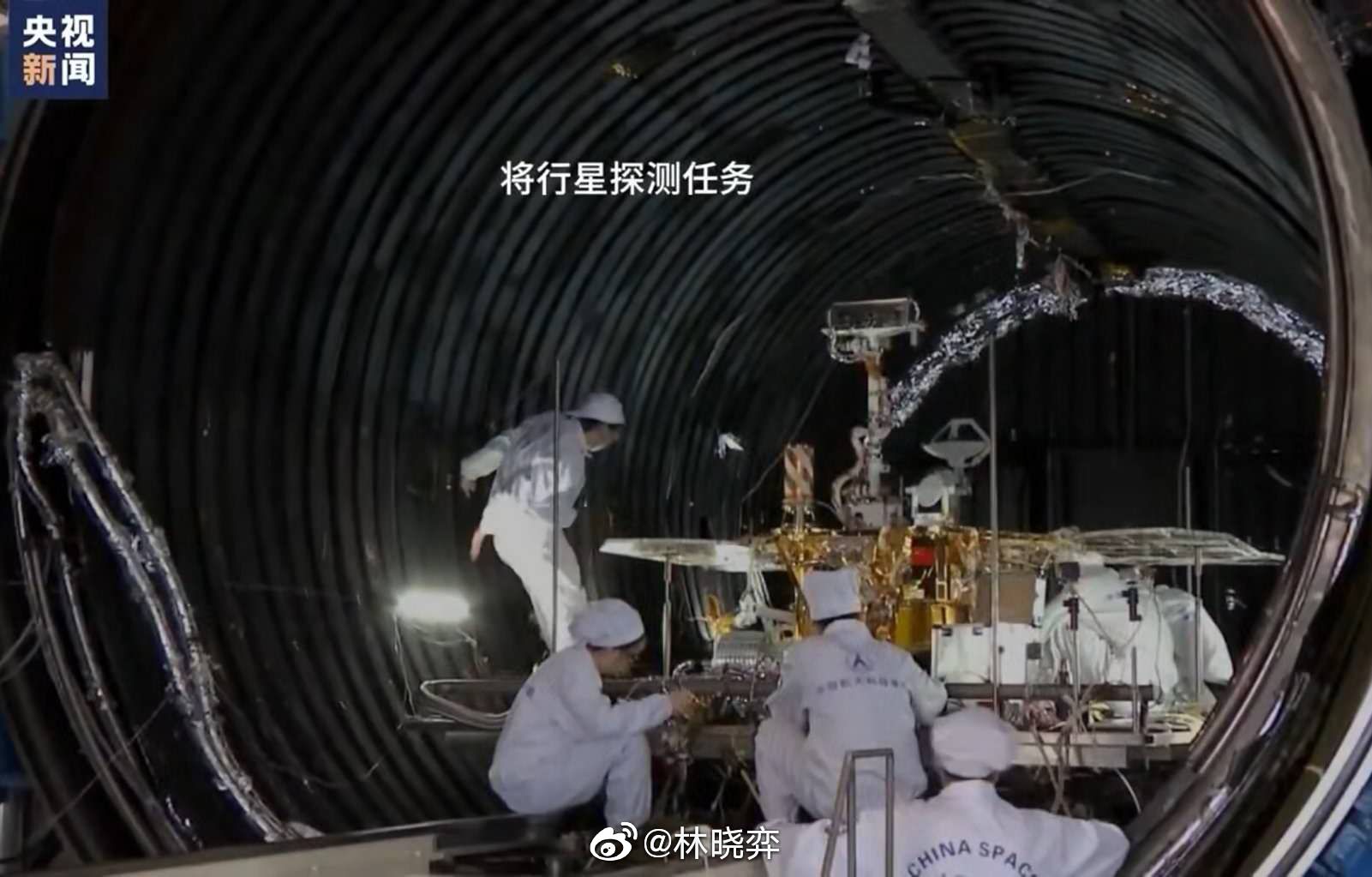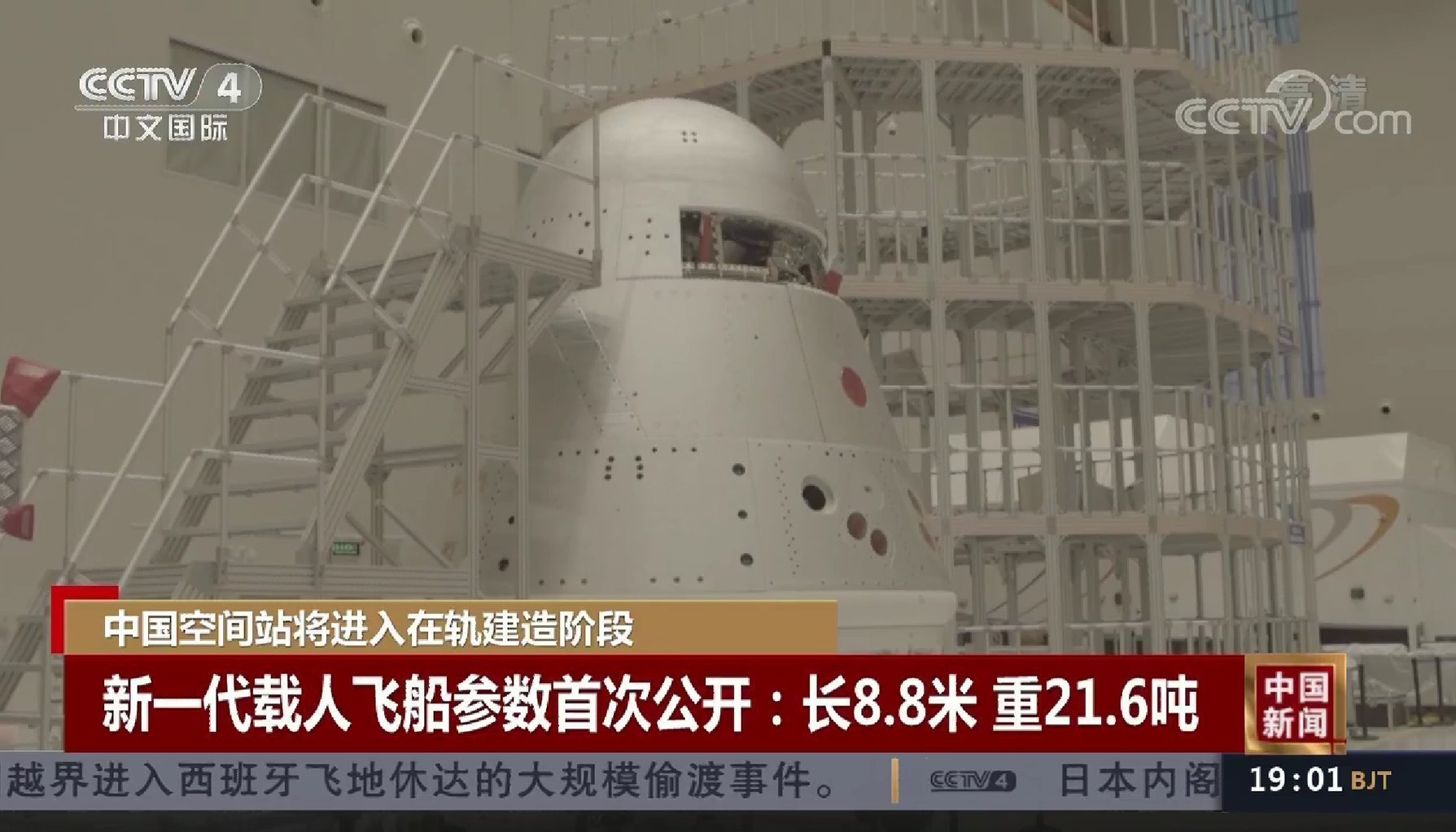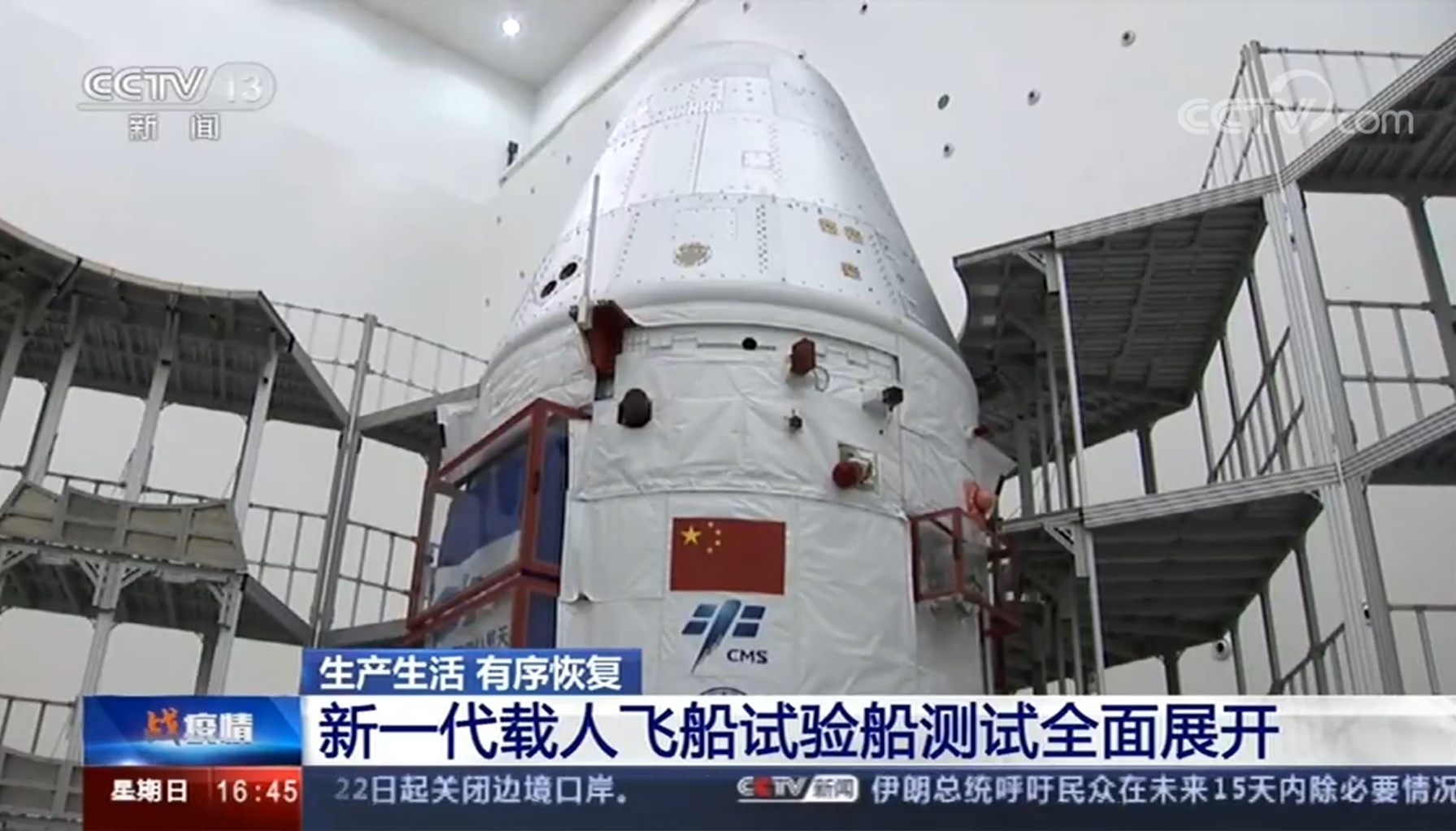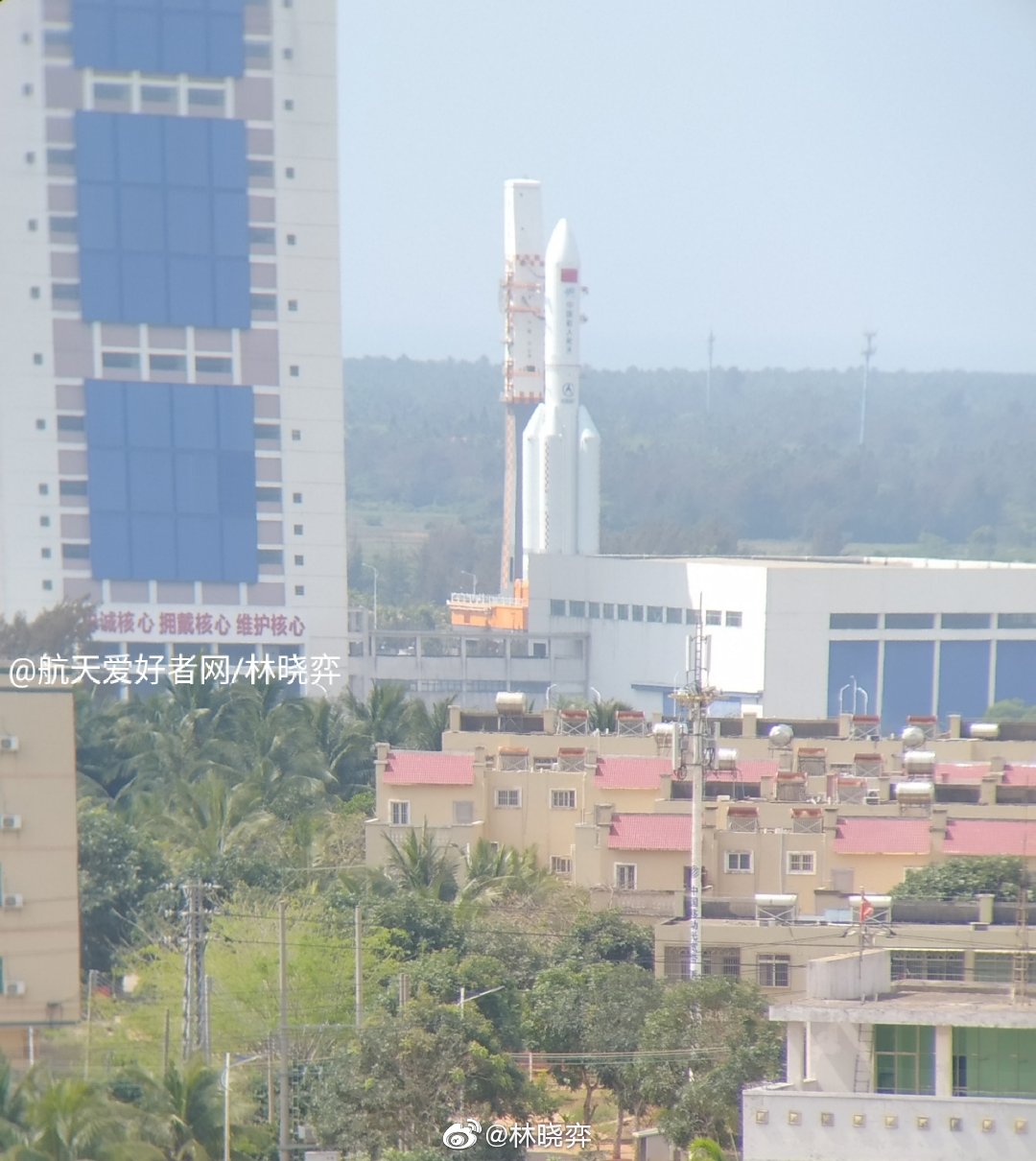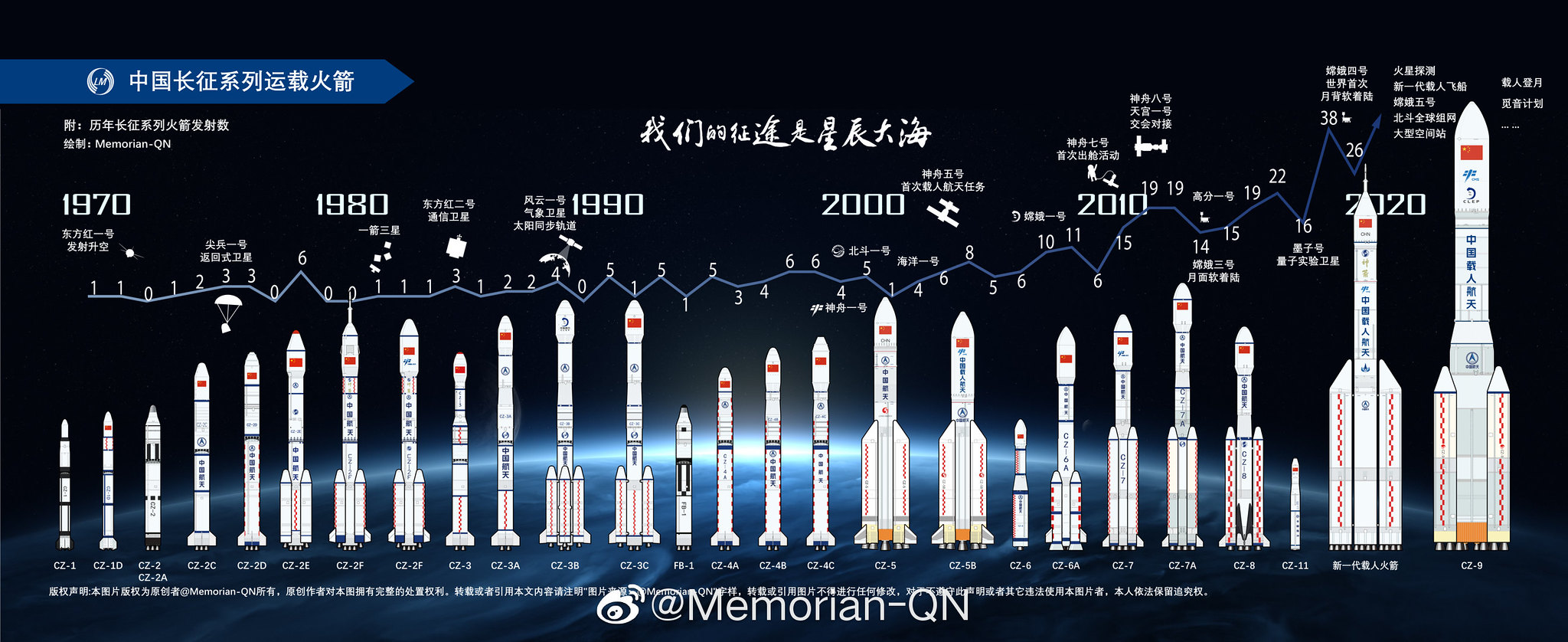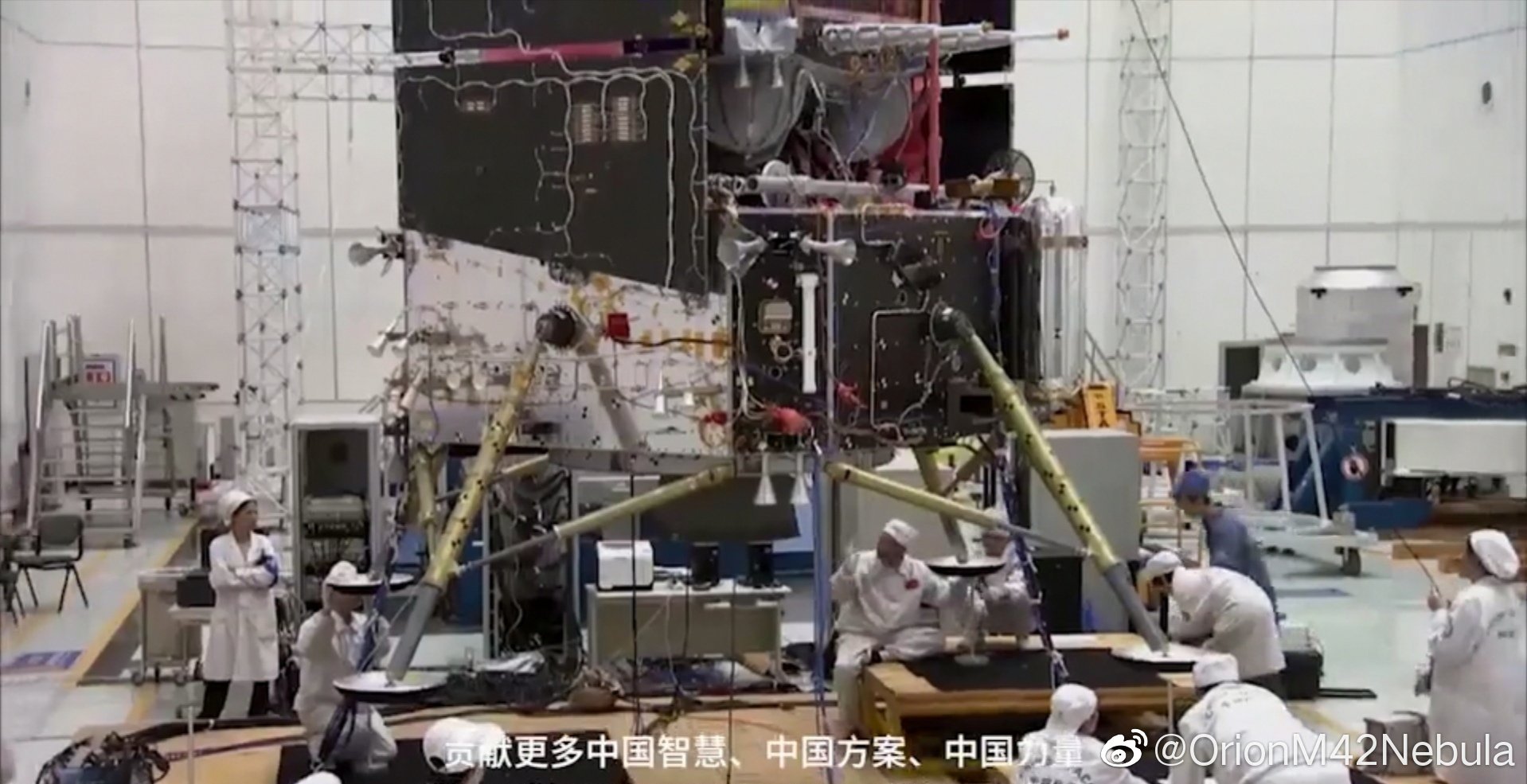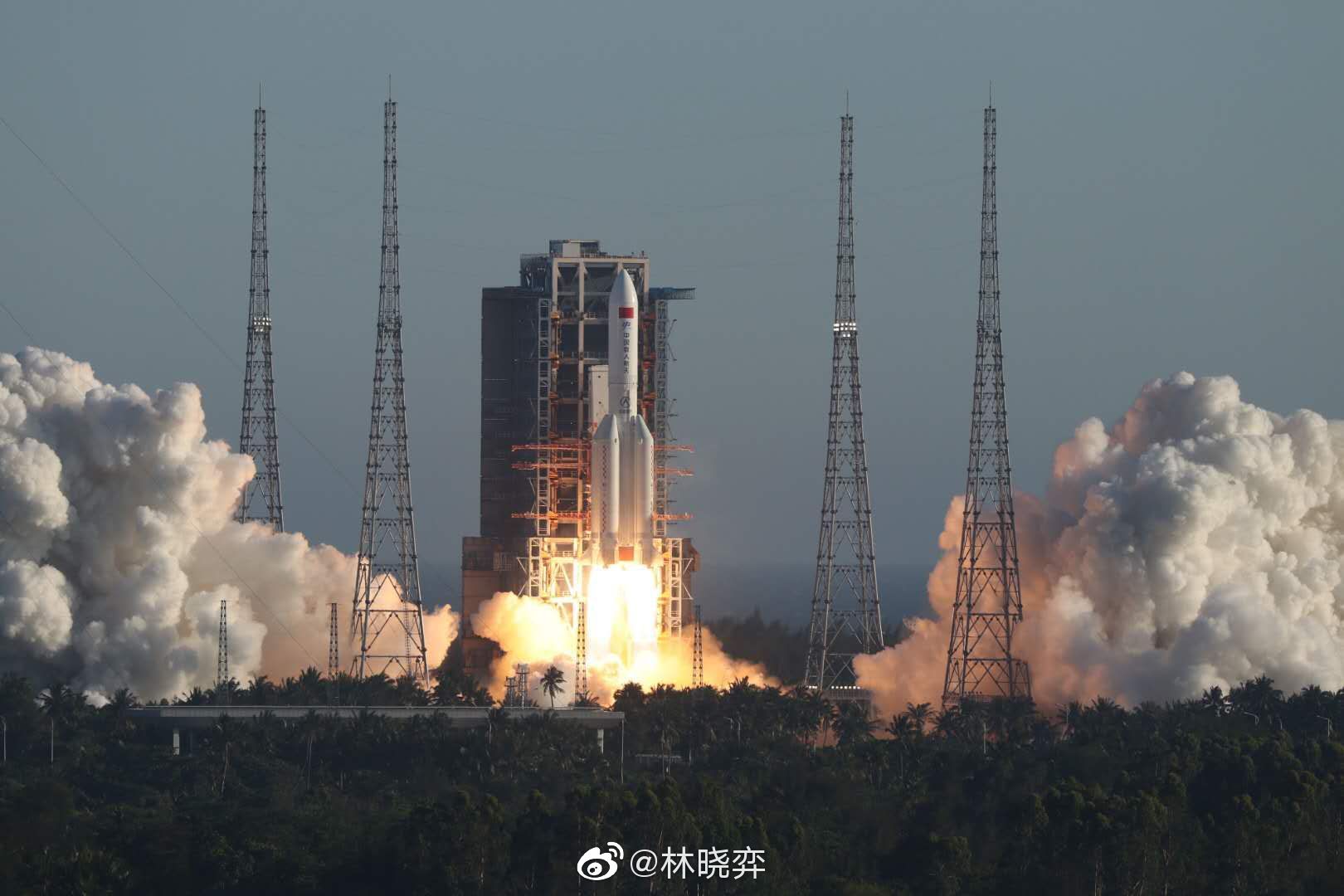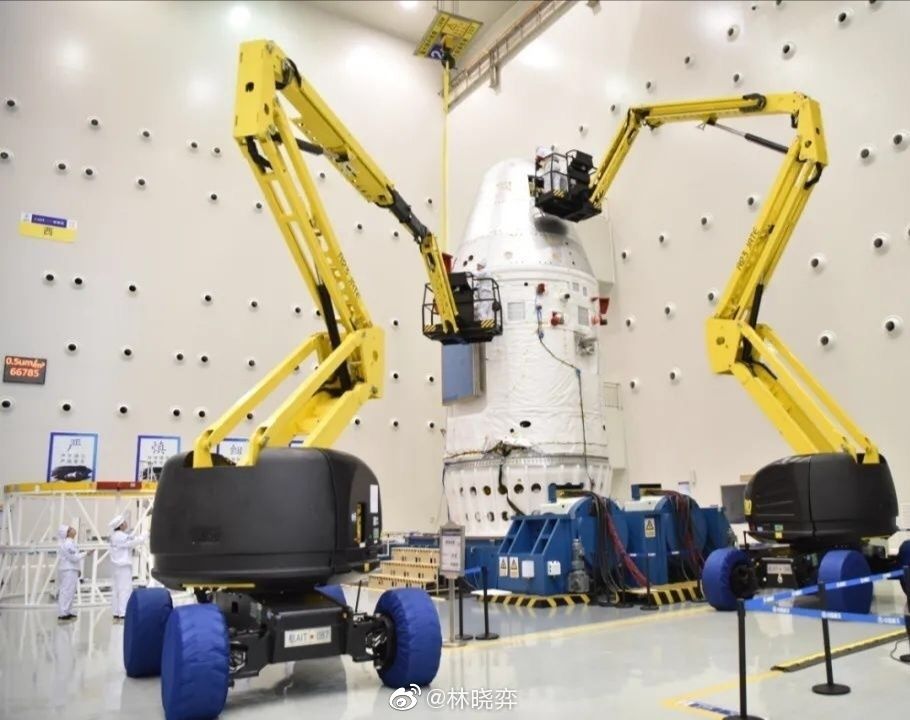the crew capsule prototype
China’s first Long March 5B rocket launches on crew capsule test flight
Flying without astronauts on a demonstration flight in Earth orbit, a test model of a next-generation Chinese crew capsule lifted off Tuesday on top of a heavy-lift Long March 5B rocket, the same launcher configuration that will loft segments of China’s planned space station.
The 176-foot-tall (53.7-meter) Long March 5B rocket lit its 10 main engines and climbed into space at approximately 1000 GMT (6 a.m. EDT; 6 p.m. Beijing time) from the Wenchang Satellite Launch Center on Hainan Island in southern China.
A live webcast produced by China’s state-run CCTV television network showed the rocket’s final countdown and launch from the Wenchang spaceport. Wenchang is China’s newest launch site, allowing vehicles to soar downrange over the South China Sea, rather than dropping stages on land as is the case during missions from inland Chinese launch bases.
The launch video showed the Long March 5B arcing toward the southeast from Wenchang into a clear later afternoon sky.
The Long March 5B’s two hydrogen-fueled YF-77 core stage engines and eight kerosene-burning booster engines — with two engines mounted on four strap-on booster modules — powered the more than 900-ton launch vehicle off the pad with nearly 2.4 million pounds of thrust.
The rocket jettisoned its four boosters around three minutes into the flight, and the Long March 5B’s core stage was programmed to fire for around eight minutes before deploying China’s prototype crew capsule in orbit.
The China Aerospace Science and Technology Corp., or CASC, confirmed the Long March 5B placed the capsule payload into its “predetermined orbit” minutes after lifting off from Wenchang.
The Long March 5B rocket is a new version of the Long March 5 launcher, China’s most powerful rocket. Designed to loft massive payloads into low Earth orbit, the Long March 5B rocket flies without a second stage, and stands a bit shorter than the full-size Long March 5 configuration.
The launcher’s lift capability to low Earth orbit is around 55,000 pounds, or 25 metric tons, according to Chinese state media. The Long March 5B version — using a “stage-and-a-half” launch architecture — is tailored to launch large modules for China’s planned space station.
Tuesday’s launch of the Long March 5B rocket also debuted a new large payload fairing measuring more than 67 feet (20.5 meters) long and 17 feet (5.2 meters) in diameter. The payload launched inside the Long March 5B’s new nose shroud is a demonstration vehicle for China’s next-generation crew capsule, designed to eventually replace the country’s Shenzhou spacecraft to ferry astronauts to a space station in Earth orbit.
The new capsule design is more capable than the Shenzhou, according to Chinese officials. It will be capable of carrying astronauts to the moon, and can accommodate up to six crew members at a time, more than the three astronauts that can fly on the Shenzhou, Chinese officials said.
In a different configuration, the crew capsule could launch and land with three astronauts, plus up to 1,100 pounds (500 kilograms) of cargo, according to China’s state-run Xinhua news agency. The capability will allow China to return research specimens and hardware from the country’s space station back to Earth.
The short-duration orbital test flight this week is expected to conclude with a re-entry and landing in remote northwestern China, perhaps as soon as Wednesday. Few details about the test flight have been released by the Chinese government.
The Shenzhou crew craft can return only a limited amount of cargo, and China’s Tianzhou supply ship for the country’s planned space station is not designed to bring any cargo back to Earth.
China’s next-generation crew carrier is also reusable for up to 10 flights, with a detachable heat shield built to handle higher-temperature returns through Earth’s atmosphere, such as those a capsule would encounter on a re-entry from a lunar mission.
The Xinhua news agency reported the primary purpose of the crew capsule test flight is to verify the ship’s re-entry technologies, such as its heat shield and recovery system. The capsule will return under parachutes and inflate airbags to cushion its landing on solid ground.
The Shenzhou landing module also returns under parachutes, but uses rocket thrusters to soften the blow of landing. That makes for a rougher ride for passengers.
With its propulsion and power module, the crew spacecraft measures nearly 29 feet (8.8 meters) long. It will weigh around 47,600 pounds (21.6 metric tons) fully loaded with equipment and propellant, according to the China Manned Space Engineering Office, or CMSEO.
Chinese officials said earlier this year that the crew capsule on the Long March 5B test flight will be loaded with 10 metric tons (22,000 pounds) of propellant, enabling extensive maneuvers in orbit. The fuel load will also match the spacecraft’s weight to the expected launch weight of the Tianhe core module for China’s space station, which is scheduled to be completed in 2022.
China launched a reduced-scale crew module on an unpiloted test flight in 2016.
Teams at the Wenchang launch base prepared the Long March 5B rocket and the prototype crew capsule for flight amid the coronavirus pandemic. Chinese state media said managers reduced staffing levels at the spaceport, and introduced telecommuting capabilities to allow some team members to participate in data reviews and meetings remotely.
China has conducted six space missions with astronauts since 2003. The most recent Shenzhou mission ended in November 2016 after a 32-day flight to the Chinese Tiangong 2 space lab with a two-man crew.
Plans to launch China’s first Mars rover later this year could depend on the success of this week’s Long March 5B launch. A Long March 5 rocket — in its previous configuration with an upper stage — is scheduled to launch the robotic Mars mission in July.
Chinese officials last month announced the Mars mission will be named Tianwen 1. Tianwen, or Questions to Heaven, is a poem written by the ancient Chinese poet Qu Yuan. The China National Space Administration — China’s space agency — said all of the country’s future planetary exploration missions will be named the Tianwen series.
Another Long March 5 rocket is scheduled to haul China’s Chang’e 5 robotic lunar mission into space later this year. Chang’e 5 will attempt to retrieve samples from the moon’s surface and return them to Earth.


